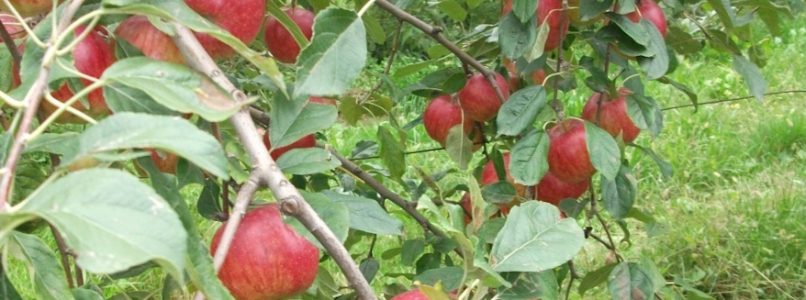They have weird names, sometimes female, like Carla, or of colors, Grigia di Torriana, or, again, Gamba Fina, Buras, Runsé, Magnana, Dominici and Cavilla Bianca. They are all apples of native varieties, present in Piedmont since the end of the thirteenth century. Cultivated since the time of the Cistercian monks in abbeys, they have developed a particular resistance to diseases and are decidedly rustic varieties. Looking small, with a taste tending towards acid, in the 1950s and 1960s, when beautiful, red, huge varieties of apples, such as Fuji or Granny Smiths, appeared on the market, these tiny, imperfect specimens went out of fashion, effectively disappeared. "We have continued to cultivate them", says Federica Quattrocolo, contact person for the Slow Food Presidium products, "because they are on average three times richer in vitamins and polyphenols compared to more commercial varieties. But, above all, they have a completely different range of aromas, tastes and fragrances than those we are used to consuming from large distribution .
An inexhaustible wealth
There are about 700 varieties of apples registered in the territory that goes from Saluzzo to Turin, up to Pinerolo. There were more than a thousand when at the end of the eighteenth century the French nurserymen of Chambery brought them to sell to the botanical garden of Turin. In 2000, when the Slow Food project began together with the Malva Arnaldi School of Bibiana, a training institute for specific technical figures in the agricultural sector, eight qualities were chosen and with those the Presidium was established, which relates to realities or techniques that are considered to have historical value, which are linked in some way to products that define a territory, but which are considered at risk of extinction. Slow Food helps small producers to enter a communication network that gives visibility to the chosen product or reality. That of the ancient Piedmontese apples was one of the first Slow Food presidia in Italy.
A historical reality of the territory
The cultivation of apples for the Canavese area has always been very important. It is a foothill area, with great biodiversity, where there have always been many different varieties of fruit such as apple trees, kiwis, blueberries … In the town of Cavour for the garrison of apples a ten-day event has been held for many years, in mid-November All apples: here there is a fair part where fruit is sold, an educational part, with schools, and a gastronomic part, in which the chefs of the restaurants in the area offer menus based on apples, with the use of this fruit from dessert appetizer.
Ancient apples in the kitchen
All these ancient apples are perfect for raw consumption, with their crunchiness and their marked acidity. But they also lend themselves to cooking: the Gray, for example, is the most suitable to bake in the oven. Already at the time it was soaked in large jars filled with hot water and a syrup was made that could also be consumed in the following months. “In reality, all these apple varieties can be kept for many months. They are harvested in mid-October, apart from the Carla which is harvested at the beginning of September, and then they are left to mature in the lofts for months. In this time the taste softens, rounds, and buy all the nuances that make these apples an extraordinary product". In the kitchen they are extremely versatile, they are suitable both for making desserts and for savory dishes, such as roasts or risottos. They have a reddish, streaked or red-green hue, some are dotted, others are golden, such as Gray. They are apples that were once also used as a medicine in decoctions. Of all, the Carla variety is the one with the oldest taste, the one that refers to childhood memories.
Low yield, but great disease resistance
The ancient apples of Piedmont have been rediscovered thanks to events such as Salon of taste or the Basket of typical products of Turin. They are difficult varieties to grow mainly because the yield is not as abundant as that of the best known apples. They often have a tendency to alternate between: one year they are abundant, the next year the harvest is almost nil. This is the main reason why growers have decided to abandon them over the years, despite the fact that they are very resistant to pests and diseases. Fortunately the trend has changed, and now on the territory there are 25 farmers who have decided to replant these ancient fruits. The plants grow from 300 meters up to 600 meters above sea level and the higher they grow, the more good their fruits are. This depends on the type of soil, which drains and does not stagnate water and allows the plant to absorb all the nutrients present in the soil. Each plant grown in different valleys has its own particularity, and this means that biodiversity is, in these places, an unmissable resource.


